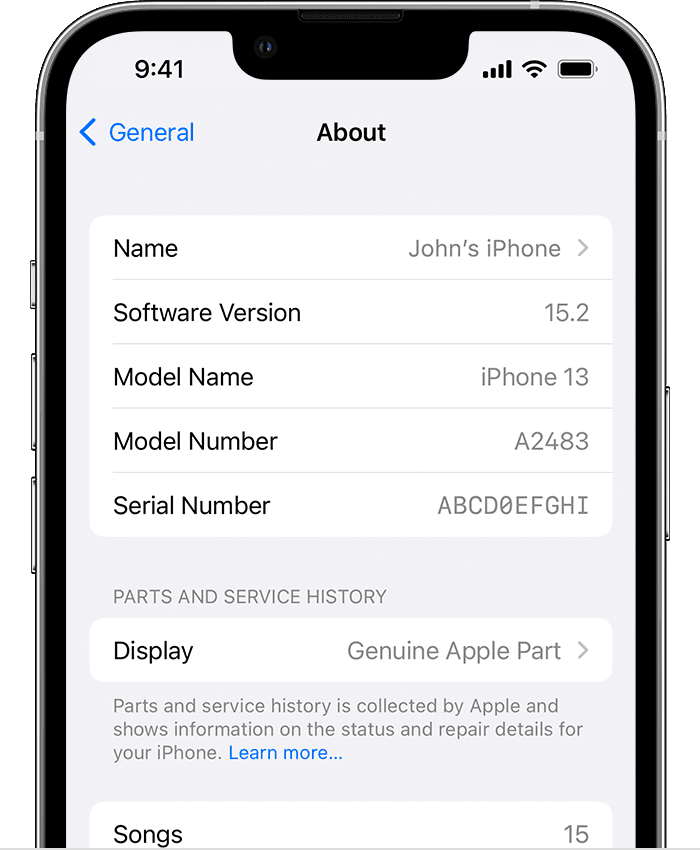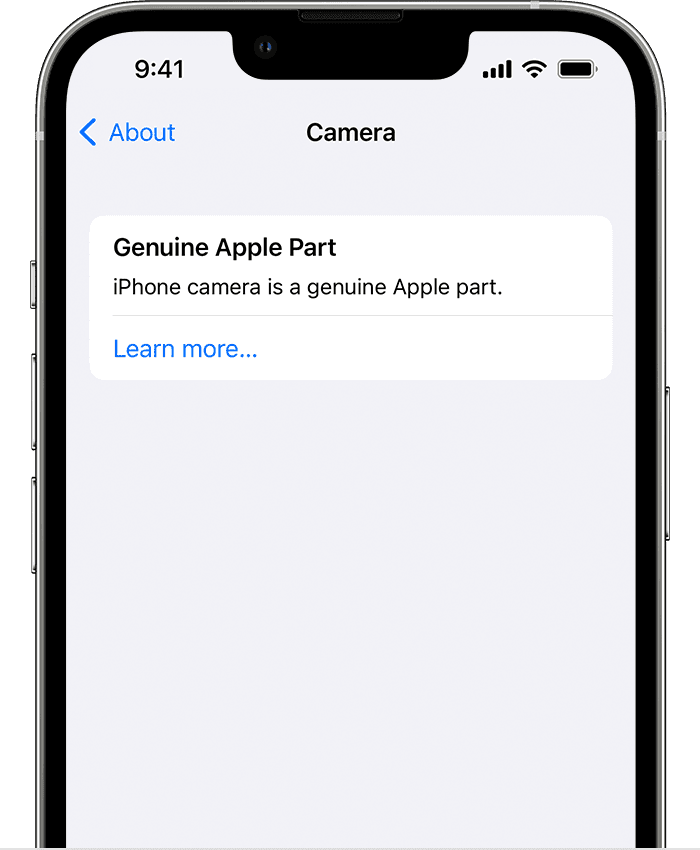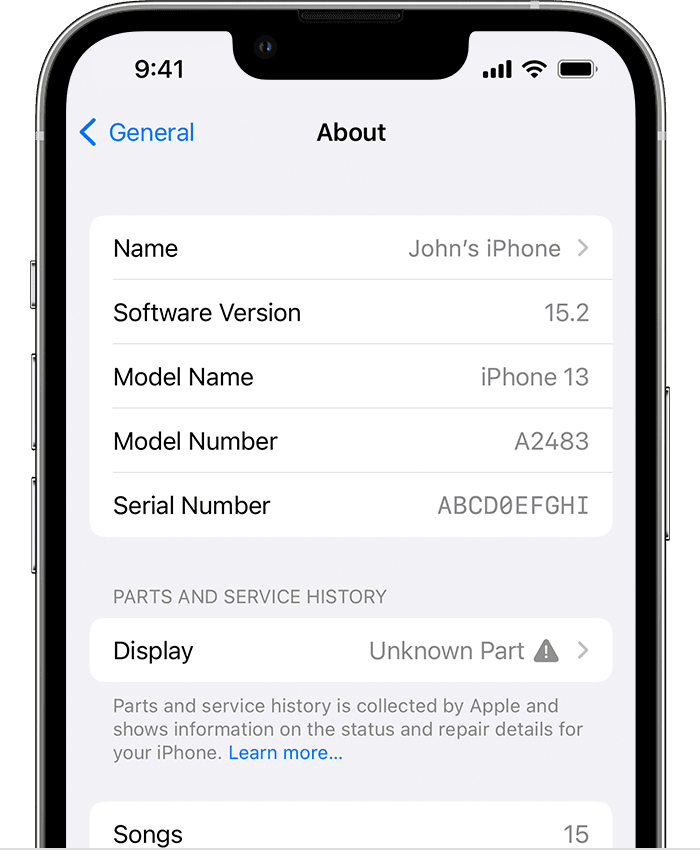iPhone parts and service history
Genuine Apple parts have been designed, tested and manufactured for Apple quality and performance standards.
Check your device's parts and service history
With iOS 15.2 and later, you can go to Settings > General > About to check the parts and service history of your iPhone.
Parts and service history
- For iPhone XR, XS, XS Max and later, including iPhone SE (2nd generation), you can check if the battery has been replaced.
- For iPhone 11 models, you can check if the battery or display has been replaced.
- For iPhone 12 models, iPhone 13 models and iPhone 14 models, you can check if the rear system, TrueDepth camera, battery, display or rear cameras have been replaced.

If the service was completed using genuine Apple parts and processes, "Genuine Apple Part" will appear next to the part. If your iPhone has connected to the internet since the service was performed, you can tap the part for more information, including the date of the service.

An Unknown Part message will appear if the part installation is incomplete or if the part:
- Was replaced with a non-genuine part
- Was already used or installed in another iPhone
- Isn't functioning as expected

For display and battery, you may find an additional message that says "Apple has updated the device information for this iPhone". This means that Apple has updated the device information maintained for this iPhone for service needs, safety analysis and to improve future products.
These messages don't affect your ability to use your iPhone, its battery, display or camera.
One of these messages may appear in the Parts and Service History section: Face ID Issue Detected, Mobile Data Issue Detected, Ultra Wideband Issue Detected or Apple Pay Issue Detected.
With iOS versions earlier than iOS 15.2, you can only check if a replacement part is identified as an Unknown Part.
Information about parts and service history is collected by Apple and stored as part of the device information maintained for your iPhone. This information is used for service needs, safety analysis and to improve future products.
Parts and service history is only shown if your iPhone has had a part replaced or if a part isn't functioning as expected. If a part has been serviced more than once, only the most recent service will appear.
iPhone parts and service history is linked to the serial number of your iPhone. If your iPhone has been repaired in a way that generates a new serial number, you'll only find the parts and service history that's associated with the new serial number.
Importance of service by trained technicians using genuine Apple parts
For most customers, visiting a professional repair provider with certified technicians who use genuine Apple parts is the safest and most reliable way to get a repair. These providers include Apple and Apple Authorised Service Providers, and Independent Repair Providers, who have access to genuine Apple parts.* Repairs performed by untrained individuals using non-genuine parts may affect the safety and functionality of the device. Genuine Apple parts are designed to fit precisely within the device. Also, repairs that don't replace screws or cowlings correctly may leave behind loose parts that could damage the battery, cause overheating or result in injury.
Depending on your location, you can get your iPhone serviced – in or out of warranty – by visiting an Apple Store or Apple Authorised Service Provider, or by sending your iPhone to an Apple Repair Centre. Genuine Apple parts are also available for out-of-warranty repairs from Independent Repair Providers or through Self Service Repair.*
* Independent Repair Providers have access to genuine Apple parts, tools, training, service guides, diagnostics and resources. Repairs by Independent Repair Providers are not covered by Apple's warranty or AppleCare plans, but may be covered by the provider's own repair warranty. Self Service Repair provides access to genuine Apple parts, tools and repair manuals so that customers who are experienced with the complexities of repairing electronic devices can perform their own out-of-warranty repairs. Self Service Repair is currently available in certain countries or regions for specific iPhone models introduced in 2021 or later.
OUR SERVICES
USEFUL LINKS
CONTACT US
WHERE TO FIND US
37 Caxton House, Northampton Science Park,Kings Park Road, Moulton ParkNorthampton NN3 6LG
BUSINESS HOURS
- Mon - Fri
- -
- Saturday
- -
- Sunday
- Closed
iComm Solutions is a trading name of iComm Communications Ltd. Registered in England and Wales. Registration No: 08771266.
ico. (Information Commissioners Office) Registration Number: ZA055756
All Rights Reserved | iComm Solutions


